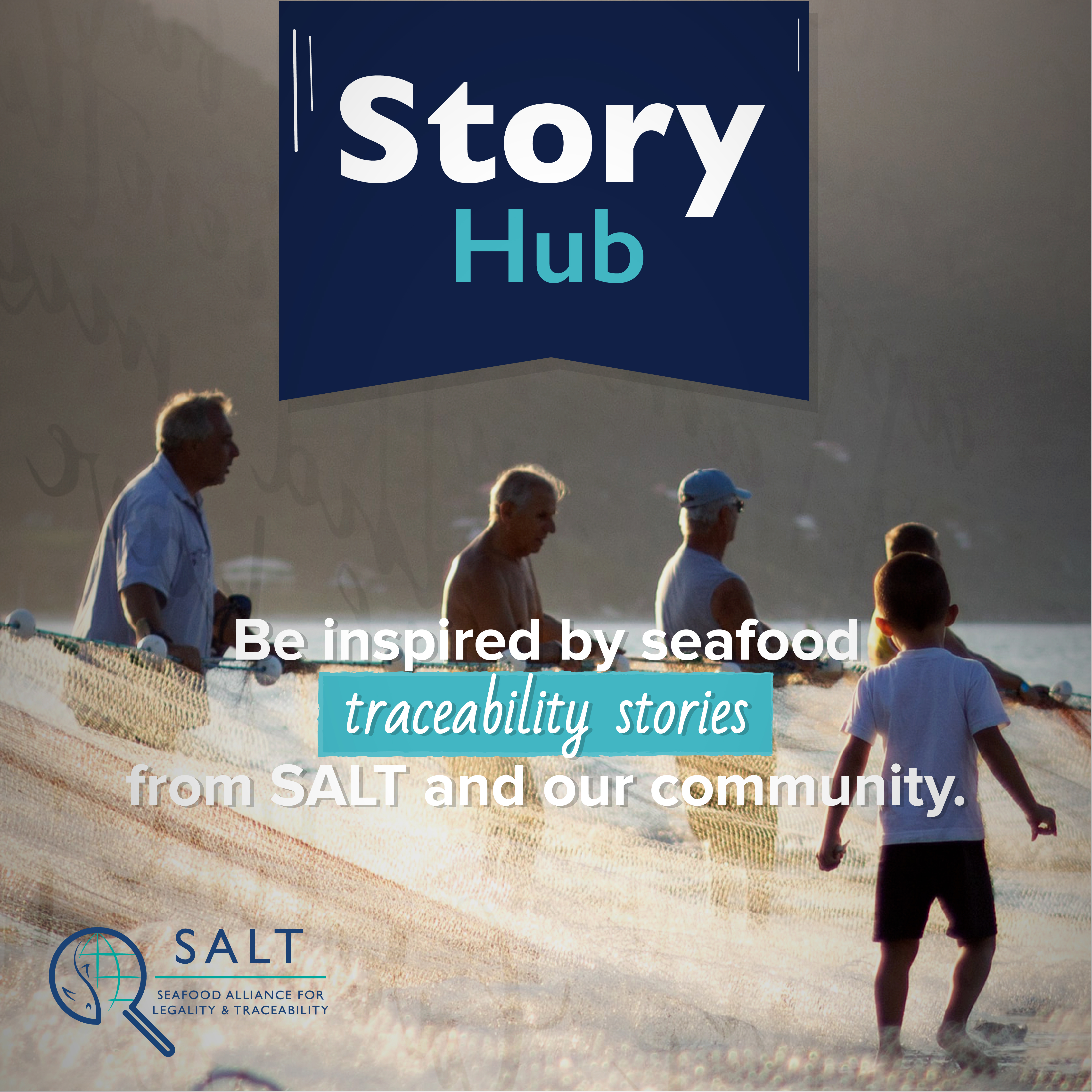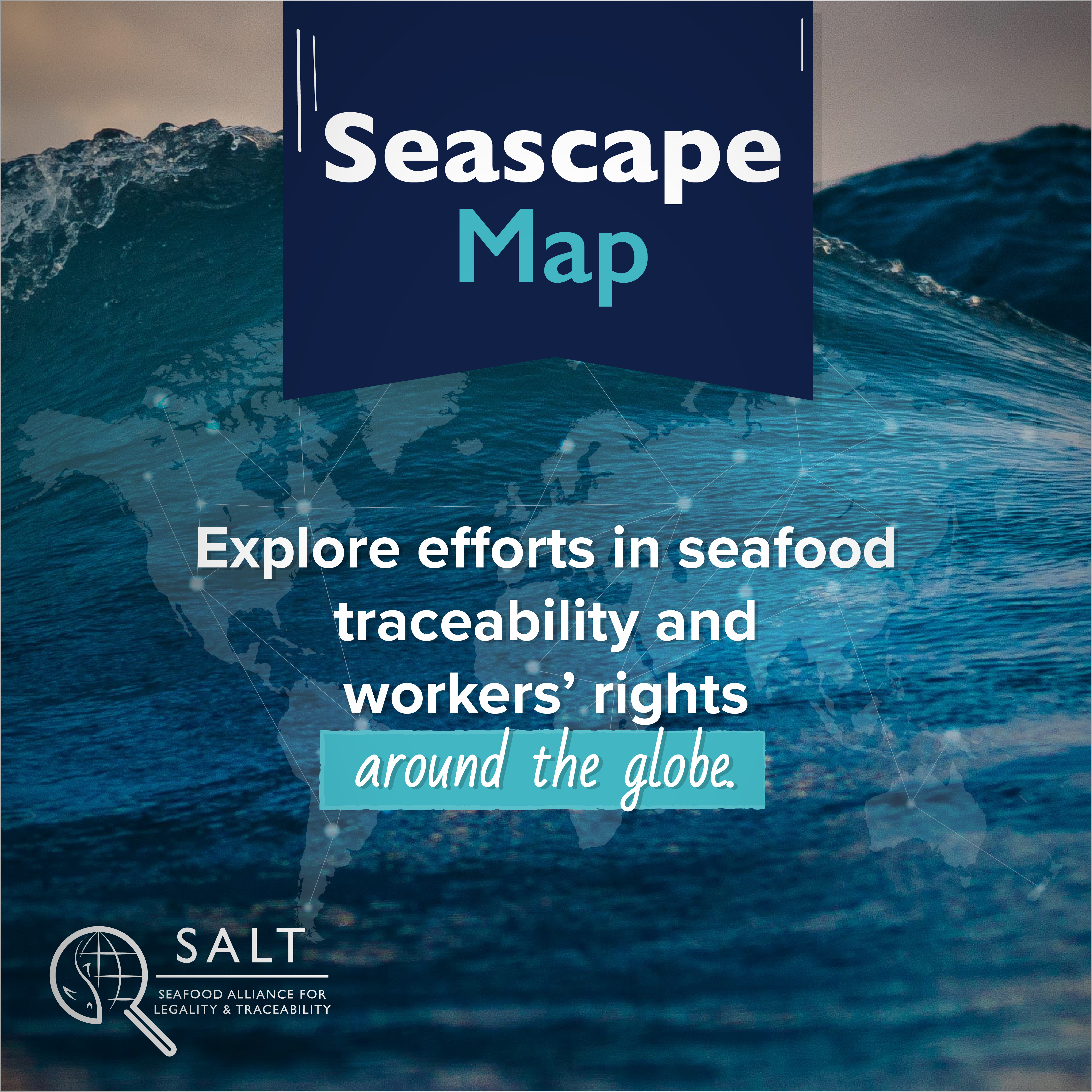THE SEAFOOD ALLIANCE FOR LEGALITY AND TRACEABILITY (SALT)
SALT was born from a need to bring together disparate initiatives, ideas, and people to advance progress in seafood traceability. This call to action united governments, industry, and organizations into a global movement working to make seafood traceable. SALT’s community, grown to more than 2,000 stakeholders worldwide, has developed key resources to accelerate your electronic catch documentation and traceability (eCDT) journey, whether you’re just starting to design a program or trying to push past barriers that are holding back your implementation success.
eCDT is a powerful tool that is here to stay.
End-to-end electronic traceability enables users to identify and document the history, distribution, location, and application of products, parts, and materials. This helps ensure the reliability of sustainability claims in the areas of human rights, labor (including health and safety), the environment, and anti-corruption (including illegal, unreported, and unregulated (IUU) fishing). SALT’s From Bait to Plate graphic illustrates the eCDT journey of seafood from harvest to consumer.
The eCDT Principles and Pathway can help you design or improve your program.
Seafood traceability programs come in different sizes and are at different phases of maturity. Wherever you are in your journey, the Principles and Pathway lay important groundwork for any traceability program. The SALT community’s creation of the Comprehensive Traceability Principles makes figuring out where to start easier. The Principles are available in six languages, and there is a Pathway to the Principles to walk through activities to help you—whether government, industry, or NGO—initiate, design, and implement an eCDT program. Since a program is only as strong as the partnerships and the collaboration used to initiate, design, and implement it, how we work is paramount to building a lasting and scalable eCDT program. SALT puts the eCDT program users—from fishers to government officials and beyond—at the forefront. This user-centered approach is critical at every step, from program creation to implementation. To learn more about SALT’s user-centered approach and co-design process, see SALT’s recent application of the eCDT Principles & Pathway from the link below.
Comprehensive eCDT programs can improve your ecological, social, and economic bottom line.
The data collected from comprehensive eCDT programs can feed into the relevant government institutions, agencies, or industry systems. Beyond quality control, governments and industry often seek benefits related to accessing markets, preventing the entry of IUU seafood and/or mislabeled products into markets, supporting legal and equitable working conditions, and enhancing fisheries management.
SALT’s Seafood Import Regulation Guide provides current import control regulations and legal requirements from the three major import markets—the EU, Japan, and U.S.—for seafood-producing countries seeking to expand their exports.
The Benefits Evaluator for Seafood Traceability (BEST) tool is designed to help measure the effectiveness of an eCDT program by providing an
evaluation framework for current or planned programs.
Through eCDT programs, you can help bring women into the fold.
Women comprise more than 50% of the seafood workforce, but their value and contribution to the seafood sector is often unseen. Barriers to gender equality in the industry include lack of recognition, restrictive gender norms, and lack of gender-disaggregated data. eCDT programs can help address these systemic barriers.
Mildred Mercene-Buazon doesn’t mince words when asserting that gender equity is not about counting the numbers of women and men in a room. “Appreciation is the biggest gap in gender work,” she says. Learn more about the role of women in Paving over the Global Gender Gap in Fisheries—Dispatch from the Philippines.
More needs to be done to make seafood traceability systems self-sustaining.
In addition to private sector and political will, traceability systems require a commitment to transparency in data collection, data verification, capacity building for users, and adaptive management. The SALT community shares its wins and lessons learned to help others grow and avoid mistakes that come from operating in silos.
The Traceability Traps and Triumphs Webinar series explores the struggles and successes in the field of seafood traceability. Hear directly from experts around the world as they share their experiences.
The Truth About Electronic Traceability: Lessons Learned from Working with the Seafood Industry shares the inside scoop on how to set and manage expectations around implementing an electronic traceability platform.
The “Overcoming Barriers” blog series explores challenges and potential solutions to barriers that a company experiences when adopting electronic traceability. This five-part blog series drew on lessons and stories from relevant case studies, reports, presentations, and stakeholder interviews and discussions.









